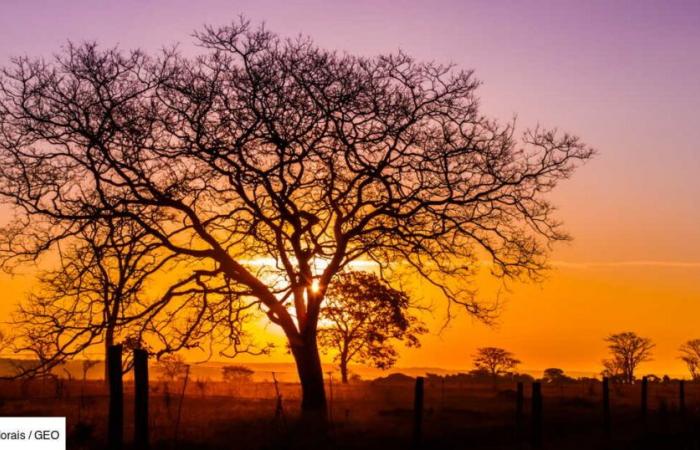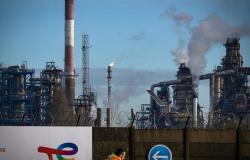At Brasília National Park, the ground and charred trunks bear witness to the passage of a fire which reached 1,470 hectares in September in this biodiversity sanctuary.
The Brazilian capital was then experiencing a historic drought, going 169 days without receiving a single drop of rain, a record.
This is far from an isolated case. The year 2024 is already the worst in more than a decade for vegetation fires, with more than 240,000 outbreaks recorded in the country.
Mostly caused by human action, these fires are spreading more easily this year due to extreme drought linked, according to experts, to climate change.
But the Cerrado, the savannah richest in biodiversity in the world, located in the southeast of the Amazon, is equipped with natural mechanisms that allow it to resist flames and high temperatures.
“Head Down”
“The Cerrado is a forest that is upside down, we see very little of this forest because it is under our feet”explains to AFP Keiko Pellizzaro, head of Brazilian national parks at the Chico Mendes Institute for Biodiversity Conservation (ICMBio), a public organization.
The ground is “like a sponge”and underground a system of very deep roots makes it possible to “pump” groundwater, “including during extreme drought”.
On the surface, the thick bark of trees and walnut shells act as“thermal insulator”according to Isabel Schmidt, professor of ecology at the University of Brasília.
Vegetation can thus survive even if the temperature reaches 800ºC due to the flames.
Regenerate the forest
Barely a month after the fires, after the first rains, grasses and small plants began to grow back between the stumps and charred trees found leaves again in Brasília National Park, a reserve of more than 40,000 hectares.
“Even if it hadn’t rained, we would have seen some resilience”assures Keiko Pellizzaro.
“I am amazed by this capacity for regeneration”confides Priscila Erthal Risi, a 48-year-old volunteer who is taking part in an ICMBio operation to green up the park.
She sows seeds of native plants such as donkey tail, or trees such as tingui (Magonia pubescens).
The fire at Brasília National Park is the subject of a police investigation. As with most vegetation fires in Brazil, suspicions relate to the start of the fire of criminal origin, to make way for fields or pastures.
The Cerrado's vegetation is used to regenerating after sporadic fires caused by lightning, explains Isabel Schmidt.
But, she warns, if extreme drought becomes more frequent, it could challenge the limits of the resilience of this biome (a large geographic area sharing a similar climate, fauna and flora).
“The resistance of plants and animals to flames has been acquired over millions of years, but climate change is observed over decades. No living organism can adapt so quickly”she laments.
In danger
Less famous than the Amazon or the Pantanal, the neighboring biomes, the Cerrado is nicknamed the “cradle of waters” because its sources feed important South American rivers and aquifers.
But it is in danger: according to scientists, the rainy season is starting later and later and precipitation has fallen by 8% on average over the last three decades, reducing river flow by 15%.
Isabel Schmidt recommends controlled fires to clean vegetation and thus limit the spread of unwanted outbreaks.
If the situation continues to worsen, “a large number of more sensitive ecosystems risk no longer regenerating”she warns.
“All rights of reproduction and representation reserved. ©2024 Agence France-Presse. All information (text, photo, video, fixed or animated infographics, sound or multimedia content) reproduced on this page is protected by current legislation on intellectual property rights. Consequently, any reproduction, representation, modification, translation, commercial exploitation or reuse in any manner whatsoever is prohibited without the prior written consent of AFP, with the exception of personal non-commercial use. The AFP cannot be held responsible for delays, errors, omissions which cannot be excluded in the field of press information, nor for the consequences of actions or transactions carried out on the basis of this information. AFP and its logo are registered trademarks »






